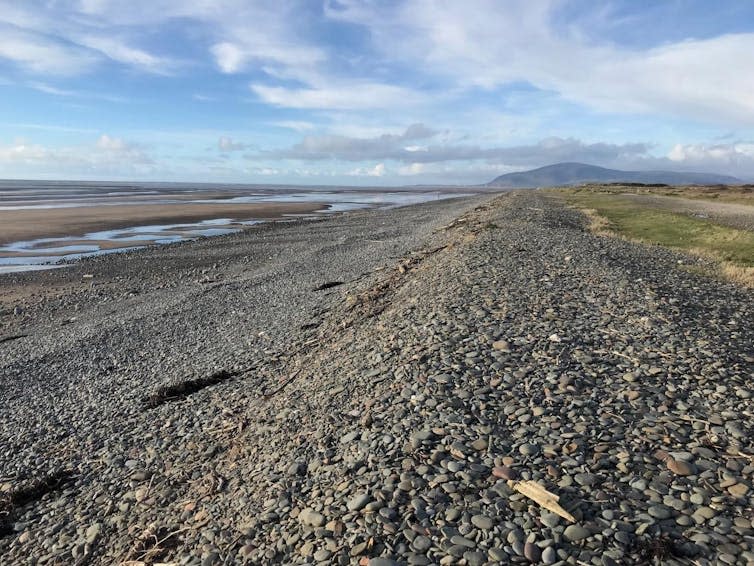Why you shouldn’t take pebbles from the beach – here’s the science

Cumberland Council in the north of England has announced that people taking pebbles from beaches will now face fines of up to £1,000. Many people found the announcement frustrating, but preventing erosion is critical, as research shows.
For many people, visiting the beach brings back joyful childhood memories. It is easy to forget that the sand and pebbles provide an important habitat for many creatures. It also provides natural protection for homes and infrastructure from the power of the sea.
Many people will have collected the odd souvenir stone, or perhaps even taken bags of pebbles for their garden rockeries. More avid enthusiasts are fascinated by the diversity of pebble types, colours, shapes and even fossils found on beaches, transported there from past glaciers or eroded cliffs nearby.
Yet it is a little-known fact that it is unlawful to remove any materials from the beach in the UK. It is a law enshrined in the 1949 Coastal Protection Act, curbing historic losses of hundreds of thousands of tonnes of sediment from beaches by people extracting “free” sediment for building materials.
Lengths of pebble beaches in England are also legally protected for their environmental qualities, designated by Natural England for the habitats they provide and species that rely on them. But for people who live near these beaches, one of the main values of pebbles comes through reducing coastal erosion and flooding.
The volume of the beach is critical to how effective it is at reducing both risks. In effect, the more pebbles and sediment on the beach, the more able the beach is to absorb wave energy. Removing lots of pebbles, sand or other sediment makes the beach less able to act as a natural barrier to flooding and erosion.
This volume changes naturally over the year, as the beach adjusts to changes in waves over the seasons. Pebbles are transported on and off the beach by waves, sorting different sediment sizes into distinct regions of the beach. More energetic waves during winter storms can transport larger sediment to the upper beach and form a steep ridge of pebbles known as a berm.
The berm at the top of the beach is often the first form of natural defence from storms, absorbing and dissipating wave energy and reducing the risk of waves carrying beyond the beach or undercutting and eroding sea walls or cliffs at their rear.
It all adds up
While one person taking a few pebbles from the beach may not significantly affect the berm or the overall beach volume, the cumulative effect of many people removing numerous pebbles may be more significant. Removing pebbles can disturb the beach’s natural sorting processes and interrupt its overall dynamic balance.
Given the importance of retaining sediment in the system for flood and erosion protection, there is ongoing research to better understand how pebble beaches respond to waves and storms. This research is particularly important for assessing the effectiveness of artificially created cobble beaches at providing protection from coastal flooding and erosion risks.
Monitoring sediment transport is key to advancing this research, with emerging low-cost and citizen science techniques being used to track sediment after it has been eroded from the beach.
In a changing climate, where these risks are predicted to be more intense and frequent, there is a pressing need to retain sediment on beaches and allow the natural coastal protection and habitat benefits to thrive.
Asking people not to take pebbles from the beach may appear trivial and insignificant, but it can help beaches play an effective role in protecting our coasts.

Don’t have time to read about climate change as much as you’d like?
Get a weekly roundup in your inbox instead. Every Wednesday, The Conversation’s environment editor writes Imagine, a short email that goes a little deeper into just one climate issue. Join the 30,000+ readers who’ve subscribed so far.
This article is republished from The Conversation under a Creative Commons license. Read the original article.

Joseph Earl is affiliated with Morecambe Bay Partnership.
Suzana Ilic was a coastal advisor to the North West Regional Flood and Coastal Committee between 2019 and 2023.

 Yahoo News
Yahoo News 


